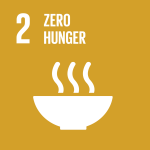Forty-eight years ago, in the small village of Kuz Metakhil, local farmer Sawri was born into a country on the verge of wars that still haven’t ended.
Located east of Kabul along the Pakistani border, Sawri still lives in Kuz Metakhil with her husband, sons and daughters. The unforgiving land provides few opportunities for off-farm work, and while Sawri and her husband pursed the odd jobs they could find, often the children would have to wander far into the hills, cutting firewood to sell to their neighbours.
“We had to borrow money from relatives and neighbours. My children couldn’t attend school because I didn’t have money to buy their books,” Sawri remembers.
Kuz Metakhil and similar geographies are the focus of UNDP Afghanistan-supported programmes such as the 'Adapting Afghan Communities to Climate-Induced Disaster Risks' (also known as the 'Climate-Induced Disaster Risk Reduction Project, or CDRRP) , which provided a greenhouse, vegetable seeds, fertilizer and training for Sawri and her family. CDRRP revitalizes struggling areas across Afghanistan by providing training in new skills and agricultural equipment to empower local people to grow their own fruits and vegetables, even on land that has been unproductive for generations.
Once a suitable area was cleared, Sawri began to grow tomatoes. The greenhouse’s drip irrigation system supports the cultivated plants using relatively little water fed by local bore wells. It also keeps the tomatoes safe from pests and harsh weather.
“It’s been a great experience for us,” said Sawri. “The greenhouse helped protect our tomatoes while we heard that farmers growing crops in the open fields suffered losses.”
Sawri and Rahman produced more than 3,150 kgs of tomatoes in their first growing season and earned US$1,500.
“It was the first time I could buy gifts for my family and I was so proud,” Rahman remarked, as the family had never seen such a large sum of money before.
With their earnings, Sawri and Rahman bought 15 goats and can now fund their children’s education. This winter, they’ll buy their firewood instead of collecting it.
***
The project 'Adapting Afghan Communities to Climate-Induced Disaster Risks' (also known as the 'Climate-Induced Disaster Risk Reduction Project, or CDRRP) is a five-year project made possible by the Global Environment Facility-Least Developed Countries Fund. Implemented by Afghanistan’s Ministry of Agriculture and supported by UNDP, the project has helped more than 800 farmers switch to high value crops and practise climate-smart techniques, such as crop rotation. Since inception the project have achieved the following:
- 56,381 people reached by public awareness activities about climate change impacts and adaptation measures, out of which 54,670 reached through social media campaigns and 1,711 reached in person
- 855 people trained on monitoring, tracking and analysis of weather data and hazard mapping (including 364 women)
- 30 community-level hazard mapping and vulnerability assessments carried out or updated
- 30 gender-sensitive community climate-induced DRR plans formulated and approved by CDCs
- 22 small-scale water management infrastructure, including flood walls, canal intakes and multi-purpose emergency shelters, built or rehabilitated for enhanced climate resilience
- 996 beneficiaries benefiting from the adoption of climate-resilient livelihood options (including 410 women and 36 kuchi)
- 30 Community Development Plans strengthened to prioritise climate change adaptation strategies and measures



